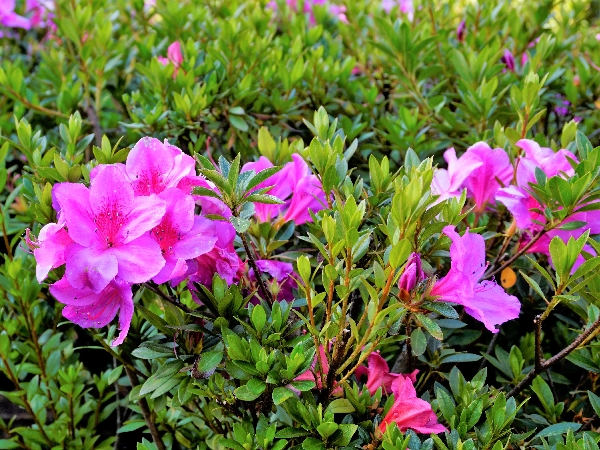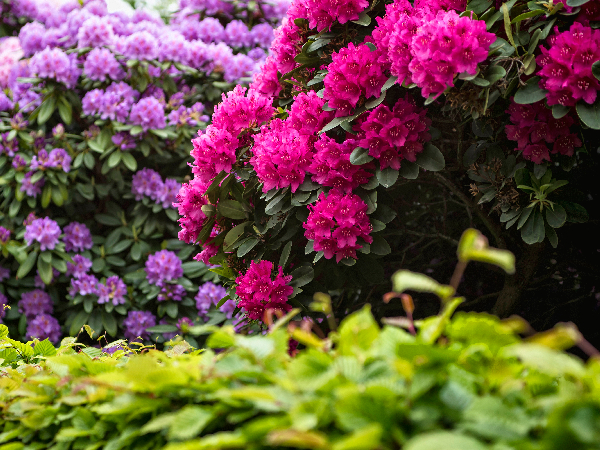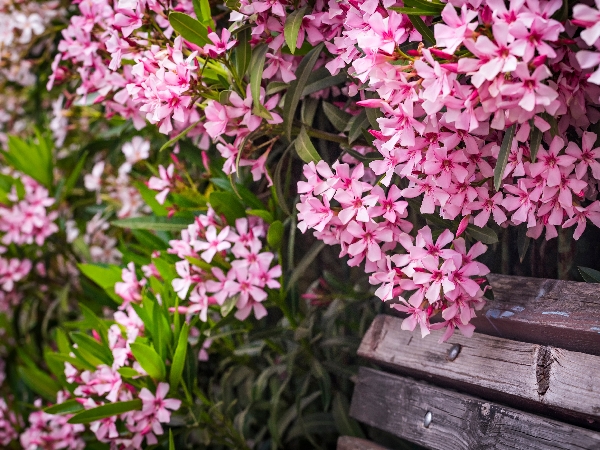9 poisonous plants for cats
As a cat owner, your biggest priority is keeping your pet happy and healthy, right? That's why you ensure they have their vaccinations and get treatments against fleas and worms.
But did you know that some house plants, specifically flowers, poisonous to cats, can be dangerous?
But what plants are toxic to your cat and what plants are safe?
Brief summary
- Many house plants, particularly flowers, can be toxic to cats and potentially lead to fatal consequences
- The lily is especially harmful, as every part of the plant is toxic and can lead to kidney failure
- Symptoms of poisoning vary but can include vomiting, diarrhea, drooling, muscle tremors, limb paralysis, and respiratory failure
Lilies

A beautiful plant with striking flowers, the lily is popular in homes. Unfortunately, it's also highly toxic to cats and should be avoided at all costs. If your cat eats or licks a lily, they’ll need to see a vet immediately. Cats that ingest any part of a lily are at high risk of kidney failure.
The most common way for a cat to ingest this toxic plant is by brushing up against it, causing the pollen to land on their fur, which they later lick off while grooming themselves. What makes the lily so dangerous is that every bit of the plant is toxic, including the leaves, pollen and stem.
Symptoms of lily poisoning include:
- Vomiting
- Drooling
- Seizures
- Twitching
Contact your vet immediately if you think your cat has eaten or licked a lily.
Daffodils

Daffodils are a sure sign that spring has sprung. But if you have a cat, watch out. They contain a harmful substance called crystalline lycorine, mostly found in the bulb of the plant. If your cat eats a daffodil, they might vomit, suffer tummy troubles, and even experience low blood pressure.
Daffodils also contain calcium oxalate crystals which can cause rashes and skin irritation if touched.
Daffodil poisoning symptoms can include:
- Vomiting
- Diarrhoea
- Abdominal pain
- Salivation and drooling
- Heavy, shallow breathing
- Shivering
- Lethargy
- No appetite or difficulty eating
Daffodil poisoning is rarely fatal, but if your cat has eaten enough of the plant, call your vet to discuss your options.
Azaleas

Azaleas are common and popular plants because of their hardiness and striking array of colours. They’re also extremely toxic to cats. Signs your cat has ingested azaleas may include:
- Vomiting
- Diarrhoea
- Drooling
- Lethargy
- Muscle tremors
- Leg paralysis
In severe cases, azaleas can cause kidney failure in cats and can, on rare occasions, even lead to death. If your cat eats azaleas, you should call your vet immediately so they can start treatment as quickly as possible.
Hyacinth

Hyacinths, with their vibrant colours, are a common sight in back gardens. But these flowers, like daffodils, are part of the list of plants poisonous to cats. They contain harmful substances known as alkaloid toxins that can make your cat sick. If your cat chews on a hyacinth, they might feel a burning sensation, experience digestive problems, and get sick pretty quickly. Signs that hyacinths might have poisoned your cat include:
- Vomiting
- Diarrhoea
- Drooling
- Rapid heart rate
- Shallow or laboured breathing
Thankfully, most cats won't eat hyacinths as it causes irritation in the mouth. You should contact your vet for advice, regardless of this, if you do think any of the plant has been ingested.
Tulips

One of Britain's most popular flowers, the tulip can be found in kitchens and gardens across the country and are part of the lily family. Like the lily, every part of the plant can harm your cat, with the bulb being the most toxic. Like many flowers poisonous to cats, they contain allergenic lactones, which can cause serious harm if swallowed.
Signs of tulip poisoning include:
- Excessive drooling
- Vomiting
- Diarrhoea
- Rapid heart rate
- Difficulty breathing
Seek veterinary advice immediately if you believe your cat has eaten or licked a tulip.
Rhododendrons

The rhododendron is a common shrub that’s found across the world and is a staple of British gardens. Ingesting rhododendrons can lead to severe complications for your cat's health. Immediate signs of rhododendron poisoning include:
- Vomiting
- Diarrhoea
- Excessive drooling
- Muscle tremors
- Limb paralysis
- Loss of appetite
More severe issues can include kidney and liver failure, blindness and heart issues. If left untreated, rhododendron poisoning can be fatal.
Crocus

There are two types of crocus, the spring crocus and the autumn crocus. Both are toxic to your cat and should be kept away well out of reach. Signs of crocus poisoning include:
- Severe vomiting
- Excessive drooling
- Gastrointestinal bleeding
- Liver and kidney damage
- Respiratory failure
Symptoms can come on immediately or can be delayed by days. Call your vet if you think your cat has eaten any of the crocus plants.
Oleander

The oleander is a popular plant for gardeners because of its beauty and adaptability to poor soil, Unfortunately, it’s also incredibly toxic to cats. Swallowing this plant can lead to:
- Vomiting
- Heart palpitations
- Dehydration
- Shock
- Hypertension
In severe cases, it can lead to rapid death. Seek veterinary help immediately if you believe your cat has ingested any of the oleander plant.
Indian Rubber Plant

The Indian rubber plant can be found in many British homes. Unfortunately, every part of it is toxic to cats and can cause skin irritation to their mouth and gums if ingested. Clinical signs of rubber plant poisoning include:
- Vomiting
- Diarrhoea
- Dehydration
- Red and swollen gums
Thankfully, whilst this plant is toxic, it’s generally not considered fatal and your cat should make a full recovery within a day. That being said, you may need to visit your vet so they can treat them for the secondary problems that are associated with vomiting and dehydration.
Will cats eat poisonous plants?
Cats are intelligent yet curious animals. Whilst they generally won't go looking for toxic plants to eat, they can still be at risk of poisoning whilst exploring. One of the biggest causes of poisoning from poisonous plants is when the pollen falls on your cat when they brush against the plant. They then ingest this whilst cleaning and grooming themselves later.
To keep your cat safe from toxic plants, it's best to keep the plants out of your home.
Safe plants for cats
There are lots of cat safe plants that you can keep in your home, including:
- Sunflowers
- Orchids
- Bamboo
- African Violets
- Roses
- Spider Plant
- Venus Flytrap
How to keep your cat safe from poisonous plants in the garden
Keeping your cat safe from toxic plants when they're out and about is more challenging. However, you can ensure they're safe outside by creating a cat-friendly garden by only planting shrubs and plants that are safe for your cat. However, if your garden has plants that may be toxic, then you can help keep your cat safe by:
- Clearing up any prunings and trimmings straight away
- Keeping an eye on your cat when in the garden together
- Spraying the plants with diluted lemon, lime or orange juice. Cats dislike anything citrus
What are the signs of poisoning in cats?
There are numerous signs of poisoning in cats, although the most common include:
- Drooling
- Vomiting
- Diarrhoea
- Twitching/seizures
- Rapid or shallow breathing
- Excessive drinking
- Lethargy
- Wobbly gait
- Irregular heartbeat
- Collapse
Need more advice?
To find out more about protecting your cat from poisons, have a chat with your vet.
Find your nearest vet using our Find a Vet page, or speak to a vet online using Online Vets.


